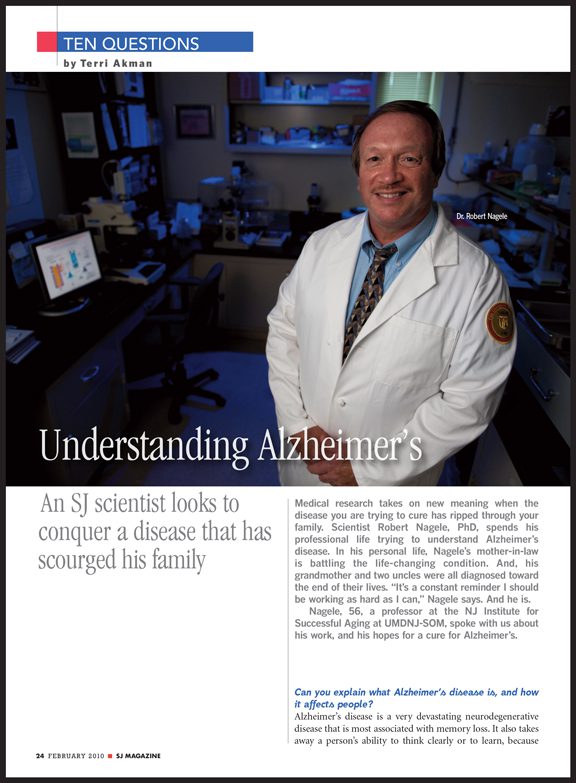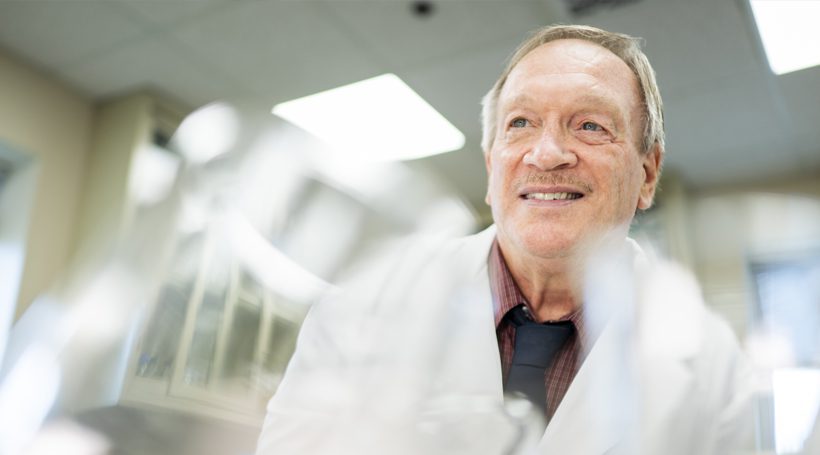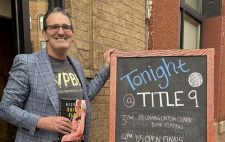
SJ Mag first interviewed Dr. Nagele in 2010, in the early days of his research.
As we age, we sometimes might think, “Did I just forget where my keys are, or is this something more serious?” But getting a definitive diagnosis for Alzheimer’s disease, which currently affects more than 6 million Americans over the age of 65, can be difficult. Getting one before developing symptoms – and, with that, some damage to the brain – is near impossible. Until now.
Rowan University Professor Robert Nagele and his team at Durin Technologies announced earlier this year a blood test that can diagnose Alzheimer’s disease a whole decade before patients begin to show symptoms. It’s a development 20 years in the making that now has an accuracy rate of 95%.
Q: What is the current process for diagnosing Alzheimer’s?
Most diagnoses start when a patient comes in experiencing mild cognitive impairment – they’re starting to have cognitive and memory problems – and ask if it’s Alzheimer’s. 60% of the time it is Alzheimer’s. 40% of the time it isn’t. It’s important for us to find out which it is, because if it isn’t Alzheimer’s, it might be a reaction to medication, a blood vessel issue or depression, and doctors can fix that. If it is Alzheimer’s, the patient wants to know.
Q: Is there a test to find out for sure?
There are 2 ways to test for Alzheimer’s disease right now: a spinal tap test and a PET imaging test, which is only effective for later stages. At that point, there’s already a lot of brain damage done. But both tests are expensive and not very accessible for rural populations.
Q: Is that where your test comes in?
The test we developed is a blood test. It’s significantly less expensive, it’s significantly less invasive and it can diagnose a patient 10 years before they show symptoms. Most importantly, it’s 95% accurate – you don’t want someone to accidentally be diagnosed with a disease that doesn’t have a cure. But getting that diagnosis 10 years before showing symptoms gives patients a chance to make lifestyle changes and delay it.
Q: How does the test work?
You’re familiar with antibodies – the proteins in our blood that attack foreign things in your body. But we also have what are called autoantibodies, which attack things your body makes. Our bodies produce debris every day due to wear and tear. Think of a car. As it’s used, it produces debris that needs to be cleaned out to keep the car running.
So we have thousands of autoantibodies that are responsible for removing different kinds of debris – kidney debris, debris in the lungs, brain debris. If we’re healthy, the levels of our autoantibodies will stay stable for years. But if we develop a disease, that disease will release more debris into the body and our autoantibodies levels will change. Our blood test uses 7 markers of autoantibodies that are seen in Alzheimer’s patients to determine if the disease is present.
Q: Does that mean this test can be used for other diseases too?
Almost every disease releases debris. We’ve already developed the test to work for Parkinson’s disease as well, thanks to funding from the Michael J. Fox Foundation. But the idea is to keep going. We’re working on cancer, ALS, multiple sclerosis, first episode psychosis and even a test to detect if an organ transplant will be rejected. All based on autoantibodies.
Q: Wow. In the meantime, what will happen with the Alzheimer’s test?
We’re hoping to get the Alzheimer’s and Parkinson’s tests on the market early next year. That’s when the FDA will monitor it before we seek final approval. The idea is that this test could be used as part of annual physicals, maybe starting at 55 years old. Doctors can monitor patients’ results through the years to diagnose diseases earlier than we’ve been able to.
Q: What is Durin Technologies?
This research is actually why Durin Technologies exists. When I realized I wanted to test antibodies, I needed funding. But grants won’t give you money without proof, so I went around New Jersey with my idea trying to convince someone to give me a quarter of a million dollars. Finally, the people at New Jersey Health Foundation [now Foundation Venture Capital Group] agreed to give me more than that, but I couldn’t receive the money as a professor, so I had to create a company. And Durin Technologies was born.
Q: What has been your biggest challenge?
Aside from getting funding, we’ve had so many times when we thought we hit a wall or didn’t know what the next step was. I thought we were at the end of the road. But I always tell my team, “There’s a solution for every problem. Are you smart enough to solve it? Are we persistent enough to find it?” It’s crazy how many times I’ve come up with a solution to a problem while shampooing my hair.
Q: Your biggest reward?
Growing up, my dad worked as a butcher in a supermarket. He dreamed of being an architect. But he told me, “The real door prize in life is getting to do something every day that you would do for free.” I’m so happy I get to do that with this work.
Photography by David Michael Howarth














